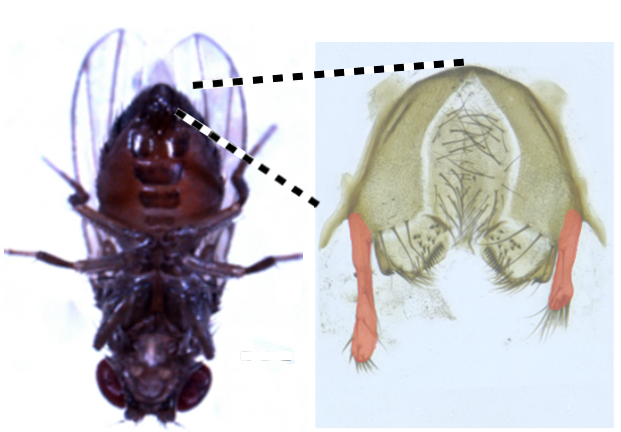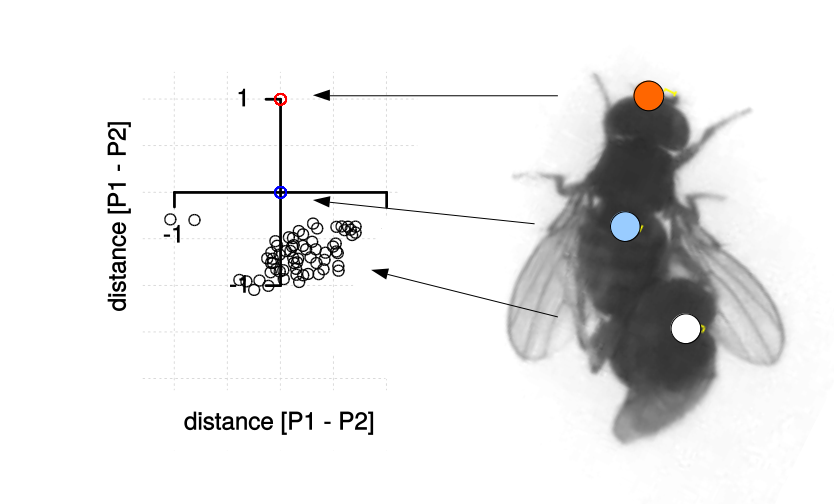Tel: 01 69 15 49 75
Evolution and Development of left-right asymmetry
Asymmetric organs are found in many organisms, but it is unknown how they evolve de novo and what developmental and genetic processes or pathways change to derive asymmetry. This project aims to uncover the evolution of left-right asymmetry by studying the asymmetric male genitalia of Drosophila pachea that have a pair of external asymmetric appendages, or lobes with the left lobe being about 1.5 times longer than the right lobe. This asymmetry is only observed in D. pachea, it is absent even in closely related sister species, and must have evolved within the past 3-6 Ma. In addition, this species adopts a characteristic right-sided copulation posture. We use a combination of functional genetic approaches (transgenic flies, CRISPR/Cas9 mutants), time-lapse microscopy and behavioral studies to address questions related to the developmental changes that underly left-right asymmetry, its evolutionary origin, and evolution of mating behavior.


